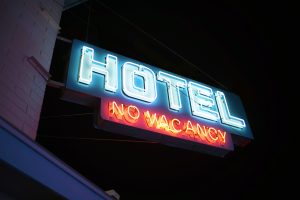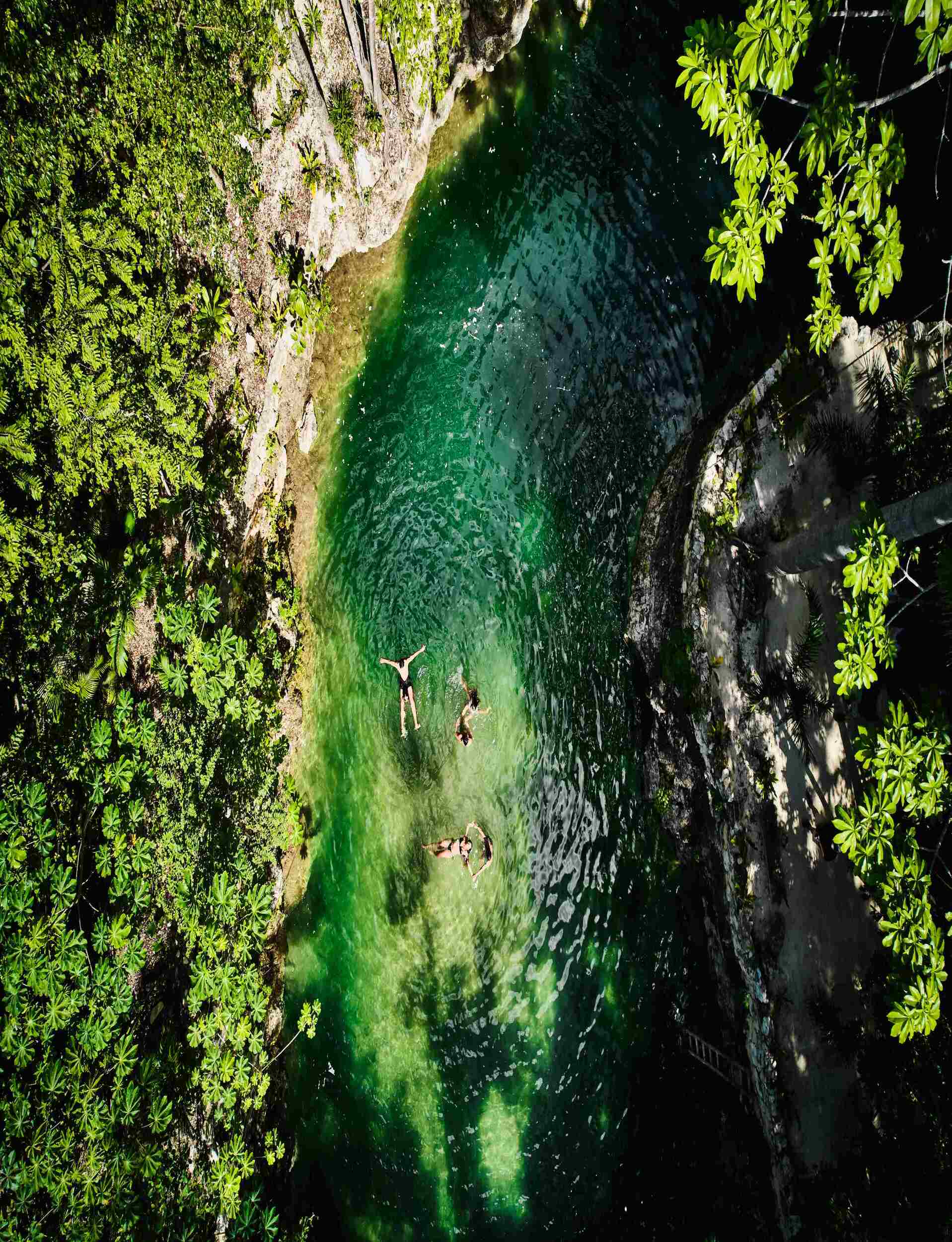


A vastly experienced hospitality professional, Glenn Carroll rose to become Vice President Commercial Europe for InterContinental Hotels Group before establishing his own independent consultancy to advise hoteliers across the world on maximizing commercial performance. In this exclusive article, he delivers a ‘how to’ guide to boosting the bottom line…
Faced with an under-performing property, hotel owners tend to jump straight to the ‘tactical’ in their response: an ad campaign, a promotion, attending trade fairs, that sort of thing. Many see it as the fun part of the job and it can provide a sugar rush to trading performance. Very often, however, the returns are fleeting or poor value; and this is because the hotel is not operating on a solid commercial foundation.
As well as teaching students at Glion, my role as a hotel consultant is about teaching the commercial journey to owners and operators who are either independent or combined in small groups, and therefore don’t have the in-house commercial firepower of a Marriott or an InterContinental.
This journey has three stages: Performance, Process, and People.

Stage 1: Performance
I always say to hoteliers that you cannot build your hotel without solid foundations; so equally you cannot have a good commercial plan without first establishing the foundation to work from.
To begin with, it’s important to look in detail at the current situation, by carrying out a commercial audit. For example, which segment or segments are you operating in? Where does your business come from channel-wise? Who are your competitors and what do they do? It’s absolutely crucial for a hotel to establish where it is today before it can look at where it wants to be tomorrow.
Once that’s done, we can start to determine our objectives, going through the metrics to come up with realistic, quantified financial objectives, ideally for three to five years ahead.
And, of course, once the objectives are agreed we must work out a strategy to achieve them. How are we going to boost revenues from, say, €15m to €16.5m in this first year? Here we talk about segmentation, which is all-important but an aspect a lot of smaller hoteliers simply don’t think about.
As a first step, I check if they are using the USALI system, which is the universal accounting system for the lodging industry. If they don’t have USALI installed, they’ll have little idea how to segment their business, so this is a prerequisite for them to invest in if they wish to implement a coherent segmentation strategy.
There are other components to the commercial strategy, including geo-sourcing your clientele and client profiling, but for this article I will look more deeply at channels, as this is very often a major source of conflict with my clients. Why? Because many have given over a high proportion of their bookings to the OTAs, at the expense of direct bookings. Too many independent hotels also overlook the global distribution systems that allow hundreds of thousands of travel agents across the world to see their property.

Here I will generally recommend that they use a third party channel manager (one example is SiteMinder) who can plug them into these global systems at a reasonably economical cost – far less than they could achieve trying to do so as an individual hotel. For some properties, the immediate uptick in business can be almost miraculous. I’ve been working with a hotel in Montenegro which did this and suddenly they were getting bookings from Australia, South Korea, purely from being visible in these markets.
Next, we’ll look at target markets, and in particular strategies around market development and market penetration. These conversations revolve around extracting more from certain markets by doing X, Y and Z; and also developing new markets by doing A, B and C.
This takes us neatly on to talking about tactical promotions, which, as I mentioned before, is the area that tends to excite hoteliers the most. The difference now, however, is that we’ve put in place all the necessary strategic elements before starting the promotions, so they can be more coherent and cost-effective. And cost is the biggest issue here: it’s absolutely essential to keep control of costs in areas like promotions to have any chance of transforming the target revenue uptick into enhanced profitability.
“It’s absolutely essential to keep control of costs in areas like promotions to have any chance of transforming the target revenue uptick into enhanced profitability”
I could write an entire article about digital vs. offline promotions, retargeting, SEO, social media, and so on. But suffice to say that everything you do to expose your hotel to a wider audience will cost money. It’s a natural expense of doing business, just like laundry, fresh flowers, and cleaning supplies. I insist that hoteliers create a cost center for promotion, with a percentage figure, and stick to it. It’s the only way to avoid those costs running out of control.
Another element to consider with promotions is timing. Very often things get done on the spur of a moment, even down to reacting to low occupancy the following week. It’s simply too short notice, and the money will invariably be wasted. I recommend getting a proper promotions calendar written down and employing a professional salesperson (directly or indirectly) to look after it.
That need for relevant expertise is true when looking at human resources more generally, and it’s a perennial problem for a small independent business like a hotel. Often I will encourage hotels to employ external consultants who are based in their key target markets, as this is the only way the property can present a consistent face to that market and avoid being forgotten about.
The final two elements of this first phase are measurement and tech stack. Measurement of commercial strategies is something even some of the ‘majors’ don’t do that extensively, so you can imagine it is a very neglected area among small independent hoteliers. And with technology I have some of my most difficult conversations, because for many smaller properties there simply isn’t the money available to invest in suitable technology such as modern property management systems (PMS) which are critical for the future health of the business. It is a classic ‘catch-22’ situation.
Stage 2: Process
The second key area of a successful commercial strategy is process. And for the first step of this we must look at business on the books – three, six, nine, twelve months ahead. It’s quite extraordinary how often this is overlooked, and a hotelier will come to me in April and say “business is looking terrible in May”. Too late! A hotel needs to be forecasting this problem three months in advance, and then its digital marketing specialists have the time to try and do something about it.

As well as looking inwards at its own commercial performance, a hotel must also look outwards at its competitor set. Again, this is something few hoteliers make sufficient time for. Worse still is when a client will say to me that they have no competition. There’s not a hotel out there which doesn’t have competition in some form or other. The hotel next door may not be direct competition, but the resort 20 kilometers down the road is, and you need to know what the hotels there are doing in terms of average rates, promotions, etc.
Hotels have to pay to access competitive data, of course, but many are truly amazed at the level of detailed data they can access when I show them. And it’s essential data, too: if your hotel sits consistently at the bottom of its competitor set for average rates, you need to know so you can do something about it.
Alongside your competitors, you must also observe your customer set. And by this, I mean primarily corporate customers. So many hotels let corporate customers walk away without even attempting to find out why. Commercially, it’s your responsibility to find this out, as a first step to rectifying whatever it was that caused them to head for the exit in the first place.
For the larger multinational customers, like the big banks, everything tends to be handled centrally, so you must have a sales channel to head office, or you will be overlooked. We’re also increasingly in a world where ESG (Environment, Sustainability & Governance) performance is being measured by stakeholders, and so RFPs will frequently contain questions about a hotel’s environmental credentials. If you can’t answer that question appropriately, you are off the list.
Stage 3: People

The final links in the chain are the hotel’s people. Here I have some of my most difficult conversations with clients, because often they balk at paying for qualified professionals like salespeople. I’ve already touched on the need to have a sales presence in key target markets, but that presence comes at a price.
Often, the conversation comes down to “do you have the right organizational structure, and in particular, do you have the right people doing the right things at the right time and in the right place?”.
I sit down with clients and look at their structure in detail, as well as at the individuals themselves, to ensure they have the skills to carry out what will be asked of them. Top down communication is also critical: everybody involved in driving revenue needs to be fully in the picture about the commercial strategy and working in lockstep towards its objectives.
It sounds simple, and indeed a lot of commercial strategy is fundamentally common sense. There’s a science to revenue management and channel management, and to crafting a digital campaign, but the secret to success is following a logical flow and having the right people in place – whether internally or via external consultancies – to carry out the plan.
Do it right, and the financial rewards can be spectacular.
- To discover more about Glenn Carroll’s hotel performance consultancy, visit the website
Photo credits
Main image: Funtap/Getty
Hotel booking: scyther5/Getty
No vacancy sign: Zachary Byer/Getty
















